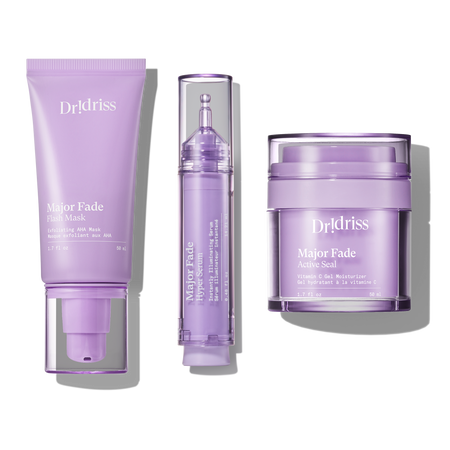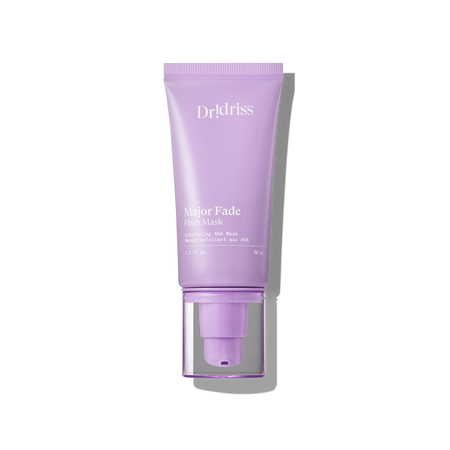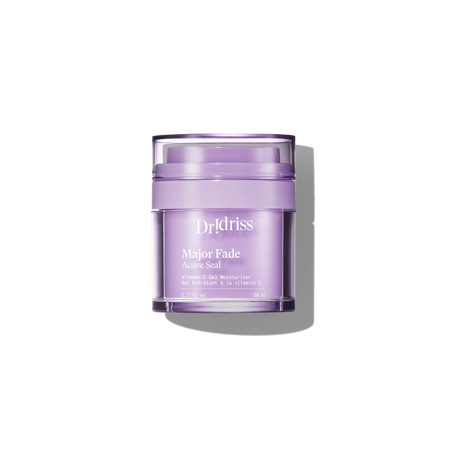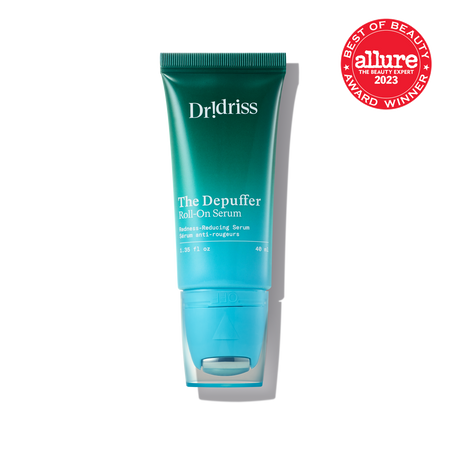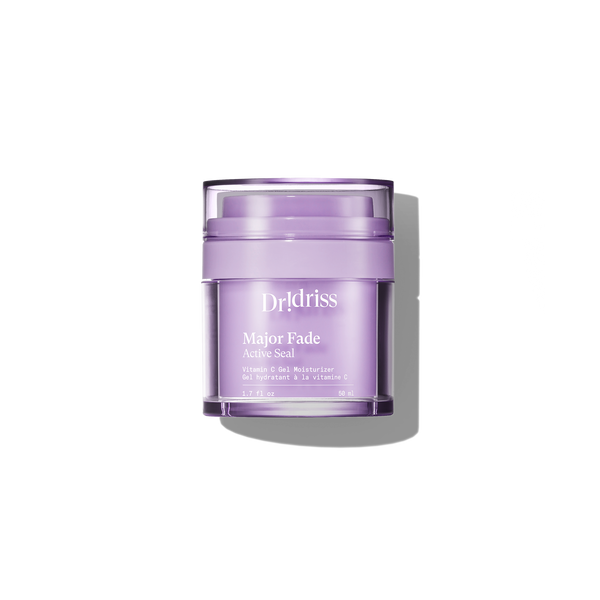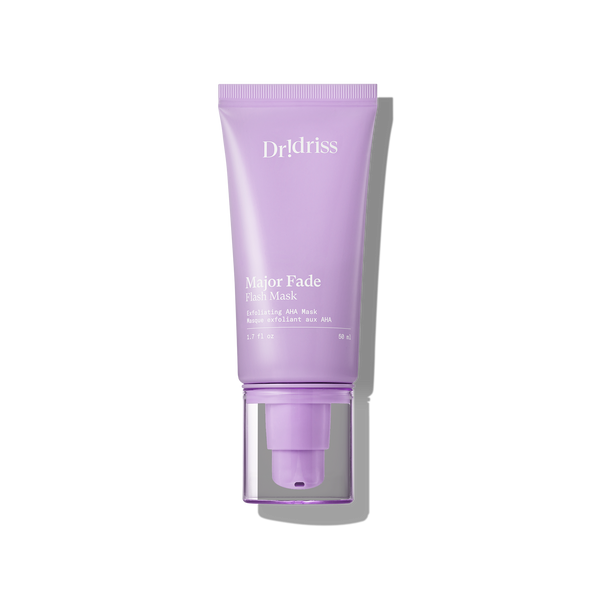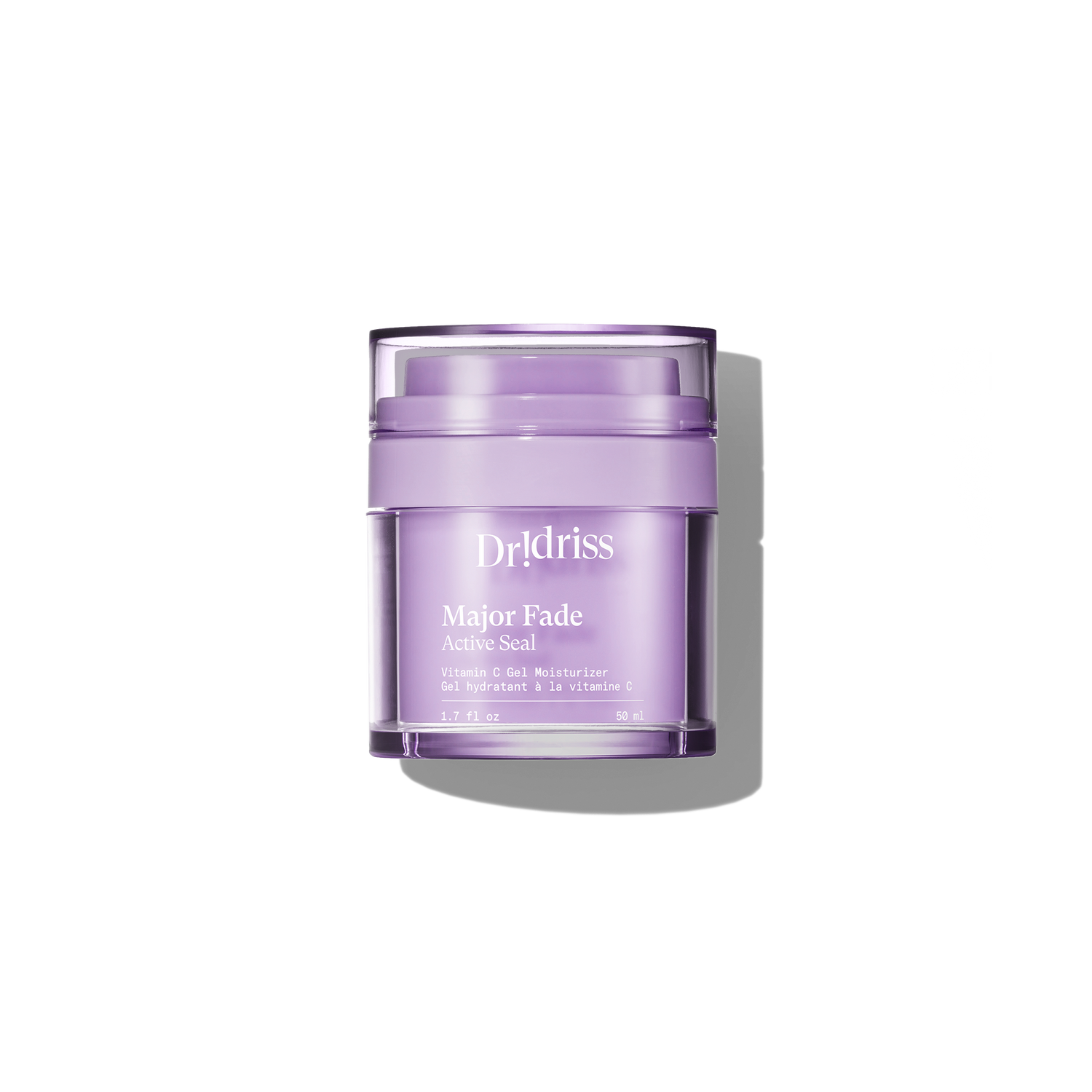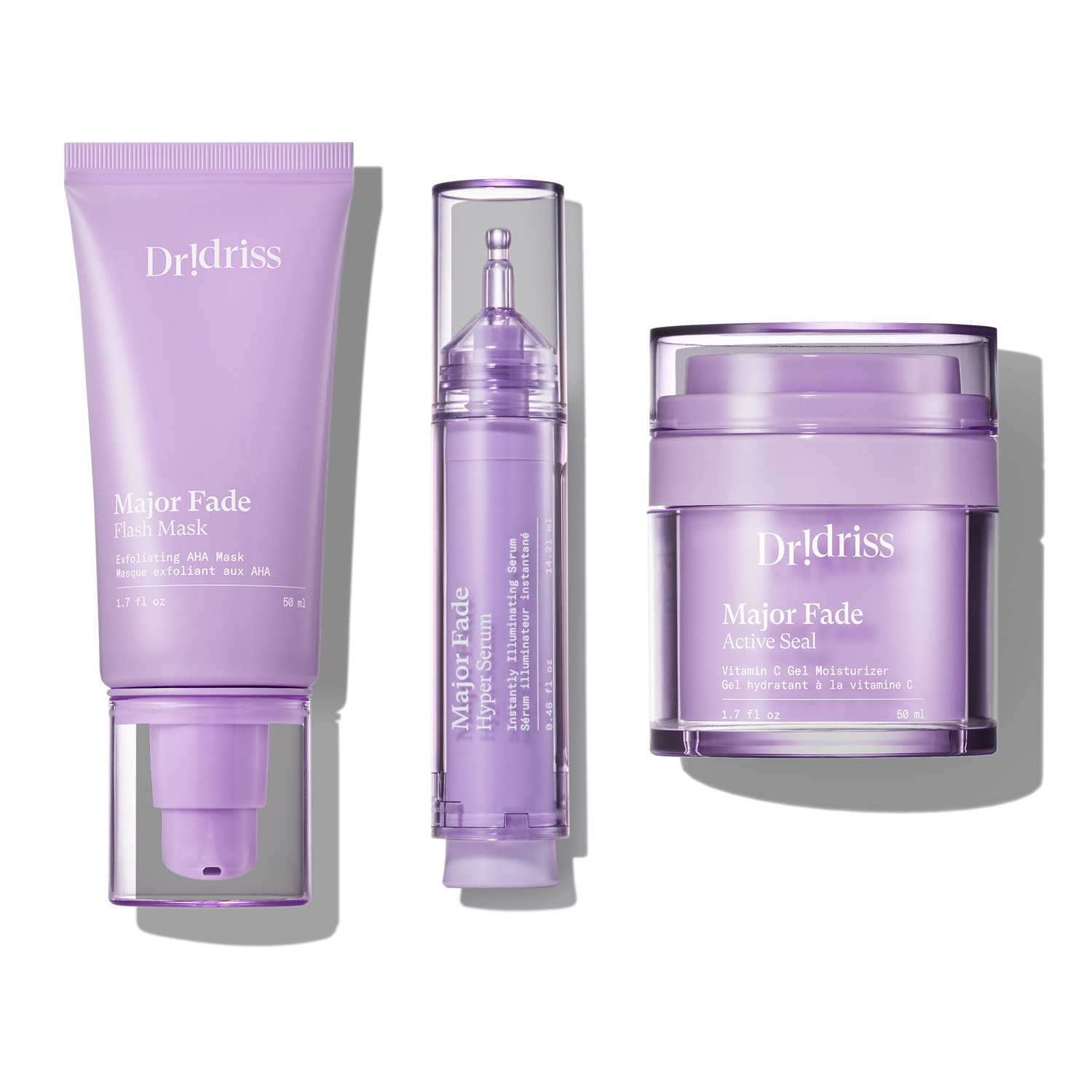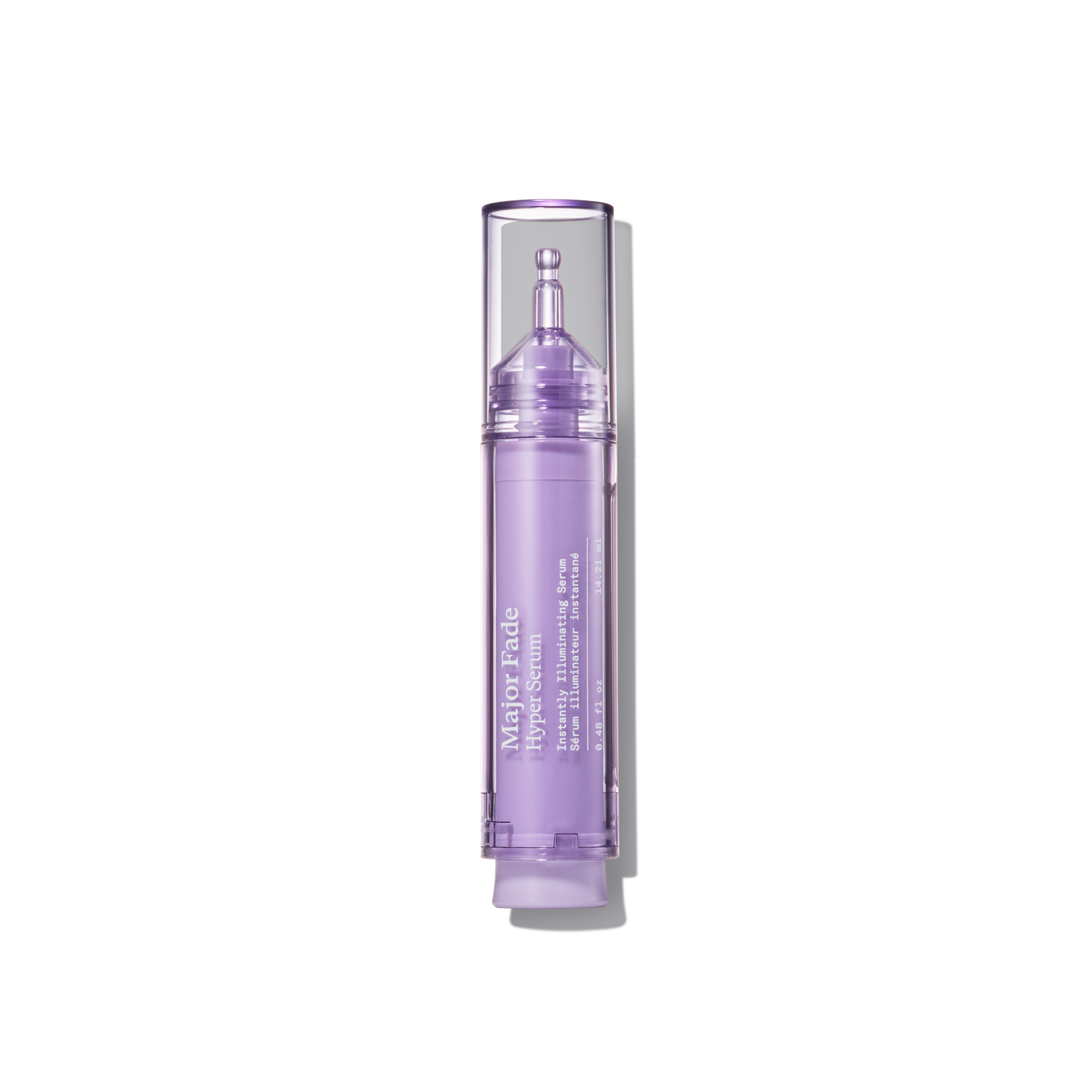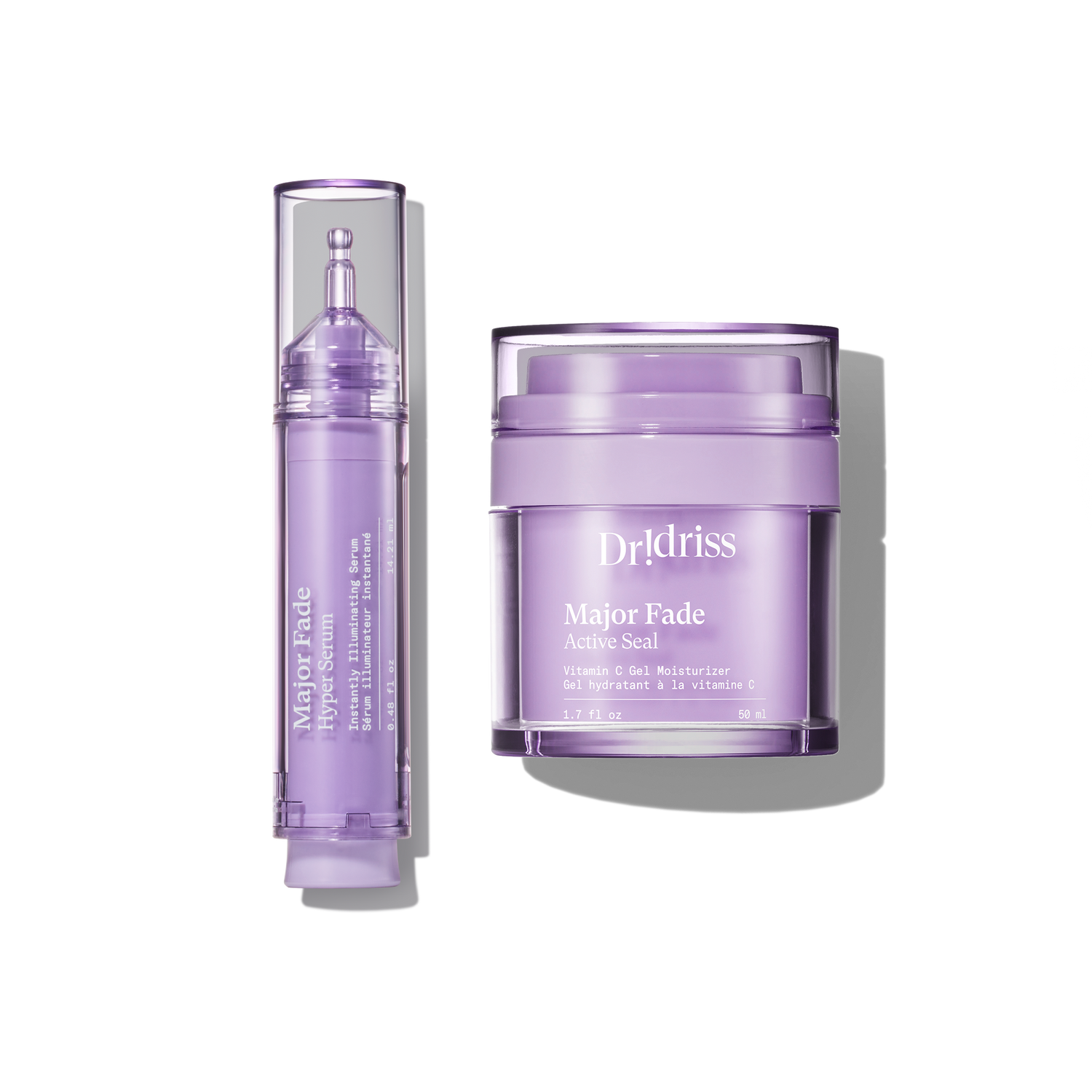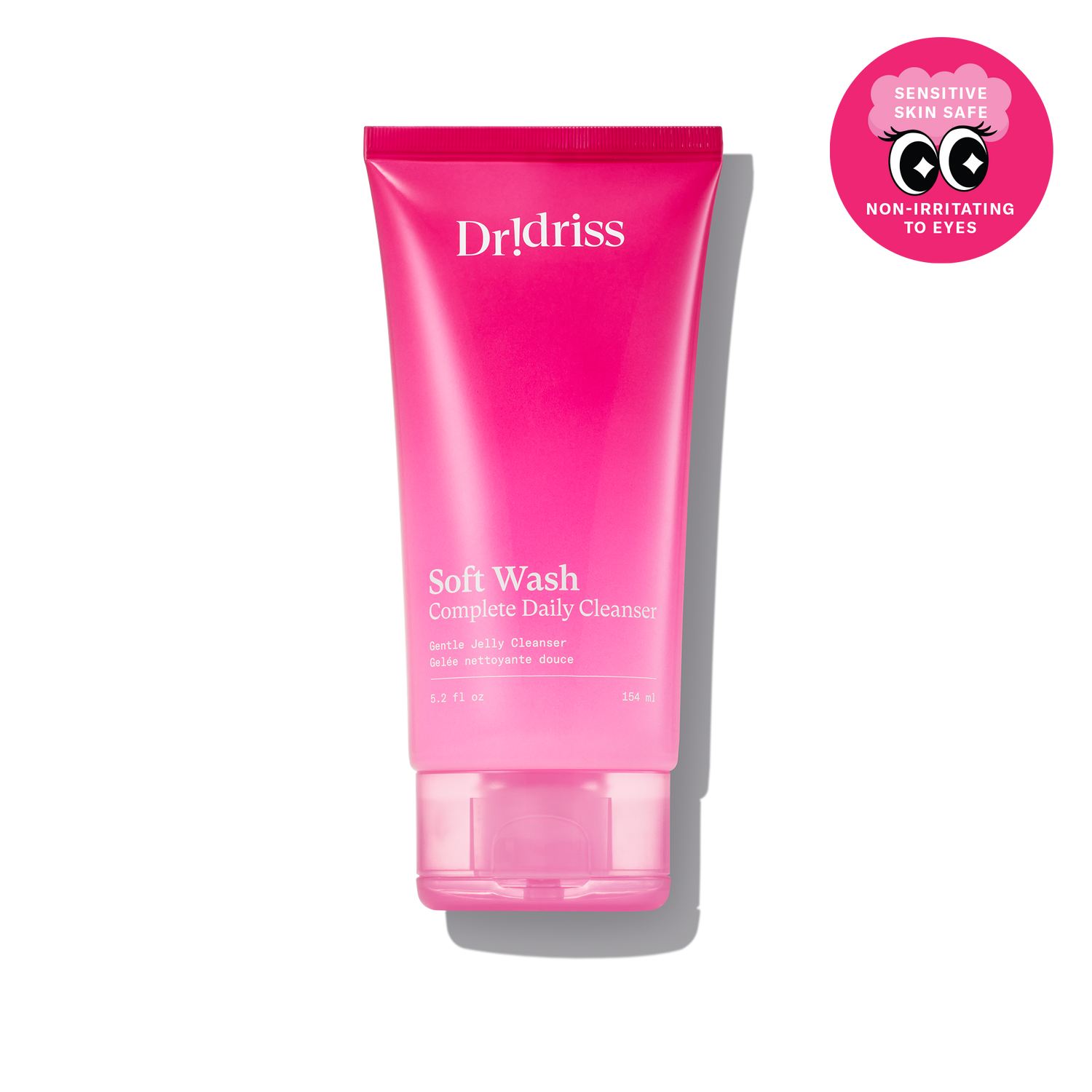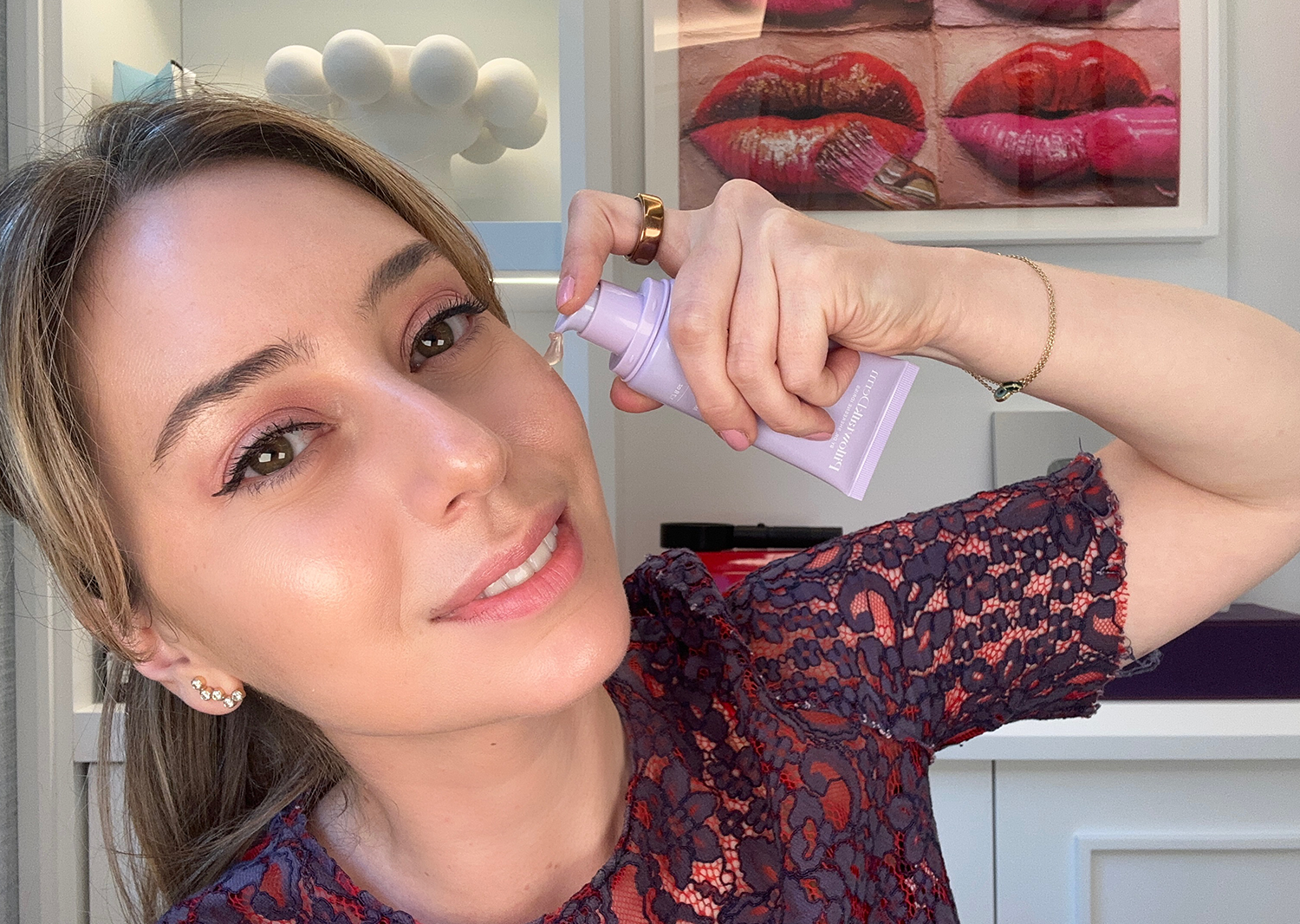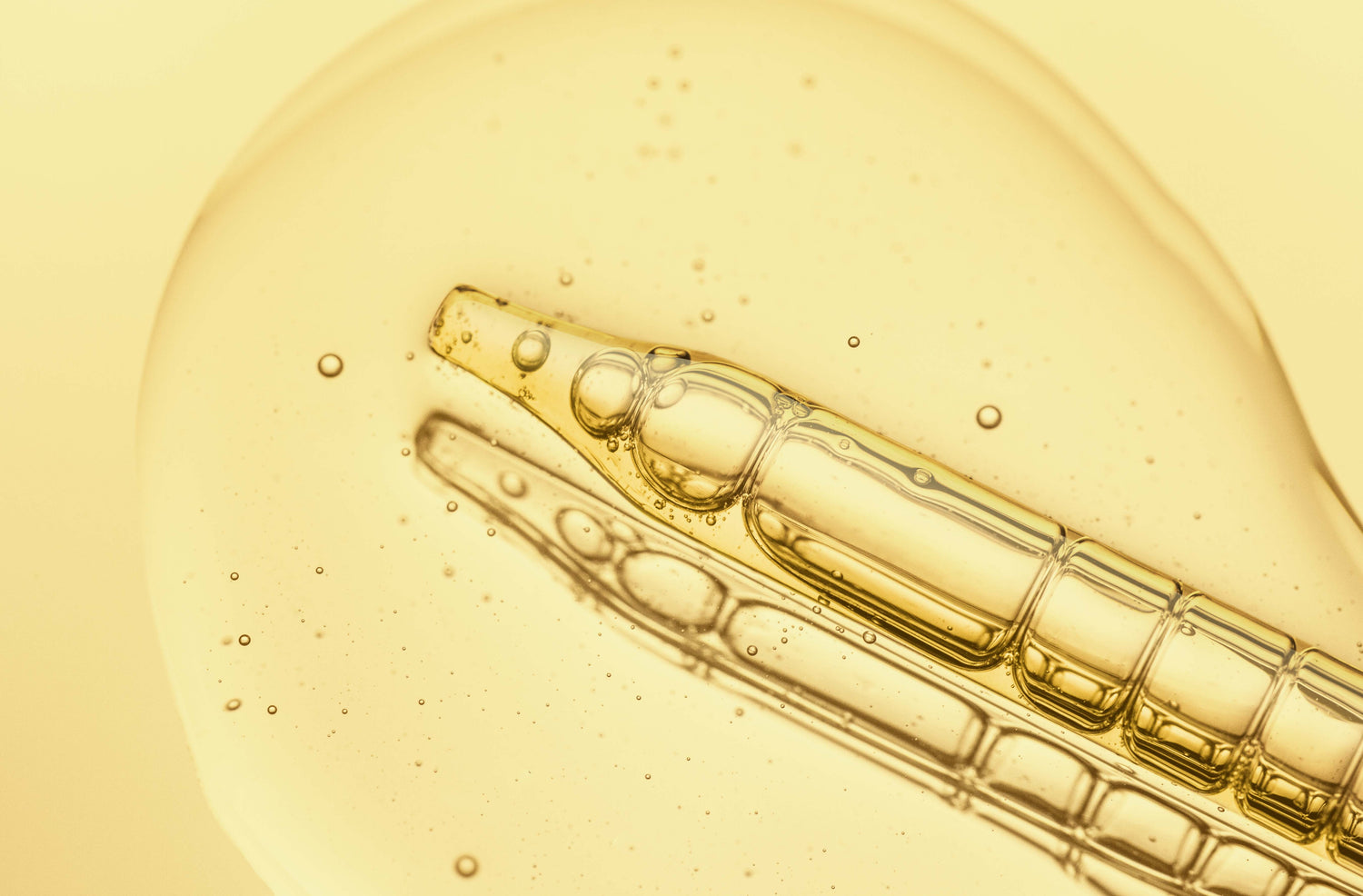
One question we get asked frequently is ‘do percentages really matter?’ The answer is more complex than a single yes and no. We’ve always preached the sentiment that more is not necessarily better. As Dr. Idriss explains, “what matters most is the percentage in which benefits are seen for a specific condition." For this reason, the secret to skin success always comes down to formulation — in other words, the right combination of actives in ‘sweet spot’ concentrations that will help treat your primary skin issue more efficiently. Hence, this little reminder on each box of our Major Fade collection:
Formulation is key. [And] this combination of active ingredients [in our blends] has been thoughtfully selected and clinically proven to deliver results.”
But keep in mind that there are still a few ingredients you should know the exact percentage of, and these include:
1. Retinol
Why? Because retinol needs to be titrated for your skin based on tolerance and sensitivities.
As Dr. Idriss explains in the article Retinol For Newbies, a common mistake she encounters as a derm is people beginning way too strong with their vitamin A derivative. With retinol, more is certainly not more, which is why we always advocate for consistency over intensity for optimal results.
Dr. Idriss’ tips:
- Opt for a retinol that your skin can tolerate on a long-term basis.
- Think baby steps as you build your skin’s tolerance and increase your retinol concentration. Begin by incorporating your new retinol at least 2-3 times a week and continue this for several weeks (to months) until any skin sensitivity subsides. Once your skin is no longer reactive, kick it up a notch by adding an extra night. And eventually, after a year, your skin will be able to withstand use every night as opposed to every other night. This approach can also be applied when intensifying your retinol percentage.
2. Exfoliating Acids
Why? Again, sensitivities. Not everyone can handle high concentrations of exfoliating acids.
Pace yourself with these babies — we’ve encountered many patients whose skin barriers have been left completely stripped due to the misuse of acids. Acids should be incorporated with a weekly view, NOT daily. Do otherwise, and you’ll end up over-exfoliating your skin, resulting in a skin barrier that’s inflamed, prone to breakouts, and consequently exposed to oxidative stress, which, in turn, speeds up premature skin aging.
Dr. Idriss’ tips:
- Pick the right chemical exfoliant for your skin's needs and tolerance. In the article A Deep Dive Into Exfoliating Acids for Fresher and Smoother Skin, I break down the different categories of chemical exfoliants (AHAs, BHAs, and PHAs) and elaborate on each’s degree of penetration and the benefits they offer to help you suss the best acid/s for your skin.
- Our Flash Mask has 15% glycolic acid and 3% lactic acid to effectively target discoloration. So if pigmentation is your issue, this will work for you!
- As always, we recommend patch testing first, especially with exfoliating acids. Hot Tip: If there are some products you just can’t tolerate on your face, but don’t want to waste it, use it on your body!
- And a non-negotiable step — always follow this up with SPF in the morning (which we all should be doing regardless). Exfoliating acids increase the skin’s sun sensitivity, so always remember that chemical exfoliants and sun protection go hand in hand!
3. Hydroquinone
Why? Because hydroquinone is not tolerated by everyone and can’t be used long term without breaks.
4-8% is the sweet spot for Hydroquinone. It’s available over the counter at 2%, but that isn’t enough to see a true difference if you have melasma. Above 8% can be irritating and has been reported to cause Ochronosis, a bluish-black irreversible discoloration of the skin.
Dr. Idriss’ tips:
- Hydroquinone needs to be pulsed, in other words, it’s not for everyday use long term. I usually recommend my patients do 2 months on, 2 months off.
- If pigmentation is your biggest skin concern, consult a board-certified dermatologist about HQ, as it is the gold standard for pigmentation. If it’s right for you they will prescribe it at the percentage level needed for your skin.
4. Niacinamide
Why? Like acids, the poison is in the dosage.
Exceed 5% in your concentration, and your skin will undergo one major freakout in the form of inflammation, irritation, and breakouts, i.e. everything that niacinamide is supposed to fend off and treat.
Dr. Idriss’ tips:
- 3 - 5% is the sweet spot for efficacy and to avoid counterproductive effects.
- In my piece, The Ultimate Guide to Niacinamide, I describe niacinamide as sort of like a ride-or-die and that adaptable friend who gels well with everyone (in this case, other ingredients). So pair this baby with other skin-barrier-boosting and brightening ingredients, and your skin will completely transform! You’ll find 5% niacinamide whipped up with alpha arbutin, kojic acid, and diglucosyl gallic acid in our Hyper Serum, which effectively fades discoloration by blocking the production and dispersion of melanin.
Read all about our Major Fade Solution System here — a collection of solution-driven staples jam-packed with all the pigmentation-fighting ingredients you actually need.

